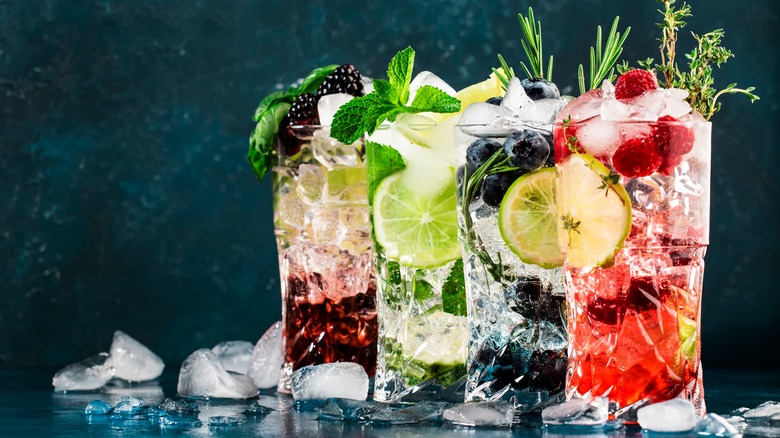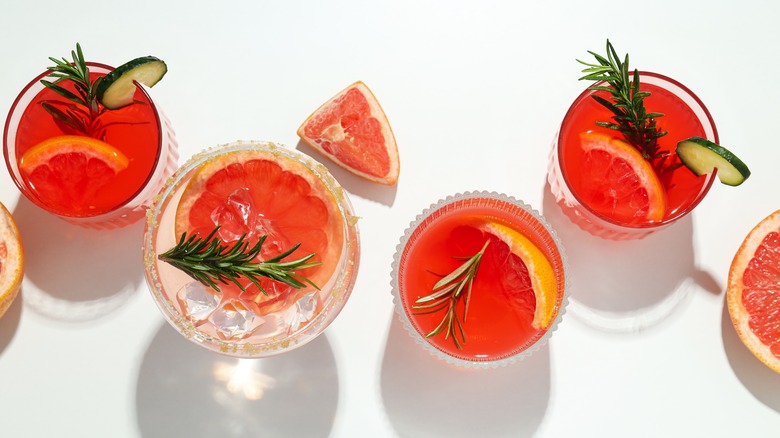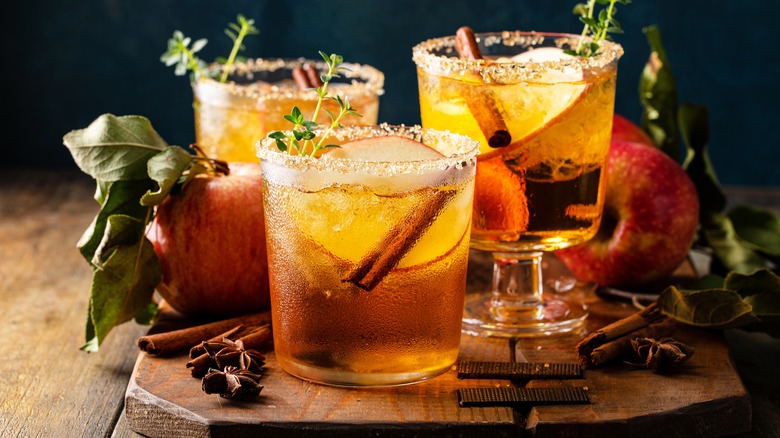A Bartender Explains How To Make Non-Alcoholic Drinks Taste Like The Real Deal
Increasingly, we see more mocktails and non-alcoholic drinks at restaurants and bars. Sometimes, these beverages are stellar, like the 30 great non-alcoholic cocktails across America that Tasting Table uncovered. But other times, mocktails may taste overtly sweet or nothing like the real deal. To learn how to elevate mocktails at home, Tasting Table spoke to Poka Lola Social Club's lead bartender, Lexi Parker.
Parker revealed why making a mocktail taste like its cocktail counterpart can be hard. Aside from a buzz, alcohol brings a lot to a drink. "Aside from the taste, I think one of the biggest elements that alcohol itself adds to a drink is weight and body, so that's definitely one of the hardest things to replicate when creating a good mocktail," Parker said.
To bypass this challenge, Parker recommends using a non-alcoholic liqueur with a vibe similar to the spirit you're trying to mimic. To help you find a non-alcoholic liqueur, we've compiled and ranked a list of 32 premium alcohol alternatives. "I think one of the main things to focus on is re-creating the element that you're missing from the booze itself [such as] smokiness from scotch or herbal notes from gin," Parker added.
Some spirits, like gin and vodka, are easier to replicate in mocktails than others
Parker and the other bartenders at Poka Lola craft their own non-alcoholic liqueur. She stated, "...we usually try to make up for these by creating a syrup or even a non-alcoholic liqueur that has a similar vibe." For instance, to recreate the herbal notes from gin, Parker would make a syrup infused with herbs. Then, to recreate the smokiness of scotch, Parker would smoke her mocktails. To learn more about smoking spirits and cocktails, check out Tasting Table's tips to remember when smoking spirits at home.
It's not always easy to replicate the flavors of different spirits, Parker admitted, adding, "It's, of course, going to be a bit easier to re-create the taste of certain alcohols over others (whiskey, tequila, and scotch, I find are harder to replace than, say, gin and vodka)." For instance, non-chill-filtered bourbon has a rich, almost oily mouthfeel. Plus, there are also at least 9 common tasting notes for bourbon. Finding a non-alcoholic replacement for bourbon to make a mocktail is quite a challenge. If you're wondering what some bourbon-based drinks are, we've compiled a list of 13 bourbon drinks that highlight the flavor of the spirit.
Add ingredients to your mocktails to simulate the flavors of the real deal, like chicory to mimic whiskey
In our conversation with Parker, we dove deeper and asked if particular ingredients could be added to certain mocktails to simulate the flavors of the real deal. Parker stated, "Examples include our Zaba: Chicory helps create bitter notes that something like whiskey might impart..." Along with chicory, Poka Lola's Zaba also includes ginger beer and baking spice, making this mocktail spicy and refreshing. With all these flavors, one might think the drink has actual whiskey, like our list of whiskey cocktails based on zodiac signs.
Another example is the Tidal Wave mocktail at Poka Lola, which has mango, coconut, and pineapple and is described as "Feel the sand between your toes." We can already imagine a non-alcoholic taste of rum in the drink. Parker added, "Our Nogroni uses Giffard's non-alcoholic aperitif, which is definitely trying to replicate the bitter notes in Campari, and the Lyre's non-alcoholic vermouth that we use in that same drink adds a bit of floral/fruity notes that a regular vermouth would have." For more tips on how to make non-alcoholic drinks taste like the real deal, be sure to check out all of Tasting Table's non-alcoholic and mocktail recipes.


